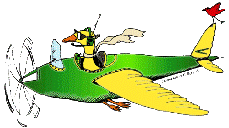Bird Strike Committee Proceedings
Date of this Version
October 2002
Document Type
Article
Abstract
Birds have long been recognized as a serious threat to aviation safety. However, other wildlife (mammals and reptiles) can also have a serious impact on aircraft. From 1990-2001, 1,029 strikes to civil aircraft involving wildlife other than birds were reported to the Federal Aviation Administration (FAA). Deer (522) and coyotes (115) were the most commonly struck wildlife. Other non-bird species struck included rabbits, woodchucks, turtles, alligators, and iguanas. Whereas 14% of bird strikes resulted in aircraft damage and 9% had a negative effect on the flight, 47% of strikes with other wildlife caused damage and 33% had a negative effect on the flight. Although non-bird wildlife strikes represented less than 3% of the reported strikes in the FAA national database from 1990-2001, 13 (54%) of the 24 civil aircraft that were destroyed due to wildlife strikes were caused by these non-bird species. We conclude that 1) Birds are not the only wildlife hazard to aviation. Runway incursions by various mammals and reptiles can result in major damage to aircraft and loss of life and must be taken seriously; 2) In the USA, these wildlife strikes should be reported to the FAA in the same manner as bird strikes. The International Civil Aviation Organization (ICAO) presently collects data on bird and bat strikes. ICAO should include other wildlife strikes in its database; and 3) We propose that the size limit for reporting non-bird strikes, other than bats, be animals greater than 200g (the size of a Norway rat [Rattus rattus] or about ½ pound). All bat strikes should be reported.


